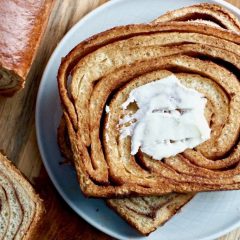
Chestnut Baguettes – Special Bakehouse Bake on May 3 and 4
A beautiful and delicious bread to brighten your day One of my all-time favorite Bakehouse breads will be available this coming weekend, May 3 and 4, at the Bakeshop and Deli! Feel free to order ahead to be sure to get yours. I’ll be picking up a couple for our house! James Beard once said: […]
Read more »

Zingerman’s Art for Sale